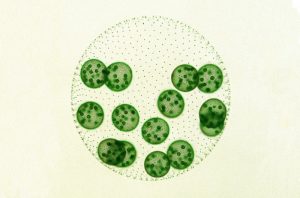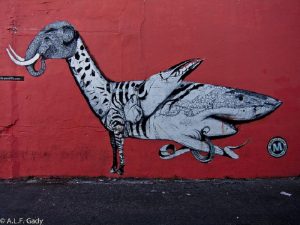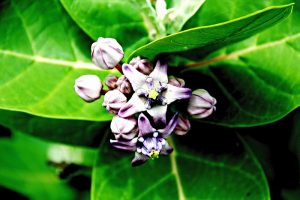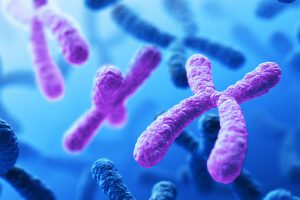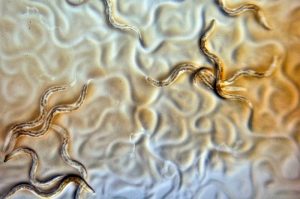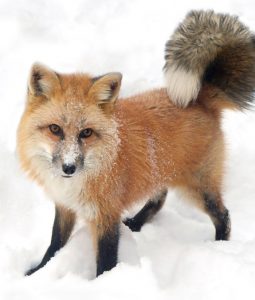Enter your address to receive notifications about new posts to your email.
Science & Publishing
-
Science & Publishing
Mathematical matryoshka: unscrambling Russian doll genes in ciliates
Elaborate genome rearrangements take nesting to the extreme. Oxytricha trifallax is a single-celled virtuoso of genome rearrangement. Oxytricha is a ciliate, and like all ciliates, it has two nuclei: a tiny, germline micronucleus and a large, somatic macronucleus. Mating brings together two micronuclei, and the daughter cell creates a new macronucleus out of the zygotic…
-
Science & Publishing
On the origin of germ cells
Recent evolution of simple germ–soma division in a green alga sheds light on the early stages of complex multicellular life. Among evolution’s greatest innovations are germ cells. These specialized reproductive cells—familiar to us as sperm and eggs in humans—set the stage for complex multicellular life because they free up all the other cells in the…
-
Science & Publishing
Mixed up: Insights into artificial sequencing chimeras
Sequencing a genome is not as simple as reading a book. All those neatly lined up letters are the final product of a complex process made up of many intricate steps that can—and do—go wrong. In a report published in G3: Genes|Genomes|Genetics, Peccoud et al. put their painful sequencing experiences to good use providing new insights into…
-
Science & Publishing
The genomic downside of greener pastures
Population data from Quebec reveals the genetic consequences of rapid human expansions. The majority of the 6.5 million French Canadians living in Quebec today can trace their heritage to just 8500 settlers who formed clusters around the Saint Lawrence River in the early 17th century. Most remained near those riverside settlements until 200 years later,…
-
Science & Publishing
Learning to peer review: program update
An update on the pilot GENETICS Peer Review Training Program, which provides early career scientists with a mentored peer review experience in which they participate in authentic manuscript reviews. The second phase of the pilot program is currently accepting applicants. As a scientific society publisher, the GSA serves our community. That’s why we are so…
-
Science & Publishing
Giant milkweed genome grows drug potential
Shrub rich in potentially anticancer and antimalarial cardenolide compounds is sequenced in search of biosynthetic pathways. The giant milkweed Calotropis gigantea, a flowering shrub that can grow to 13 feet tall, produces a multitude of chemicals that have possible anticancer and antimalarial properties. A new Genome Report published in G3 describes the plant’s genome, providing…
-
Science & Publishing
A CRISPR shortcut for switching yeast mating types
Wild yeast aren’t picky about their mates. For Saccharomyces cerevisiae, setting the mood is as simple as providing an abundant supply of nutrients, which prompts each yeast cell to search for another of the opposite mating type. If a lonesome yeast cell can’t find a suitable partner, it’s no problem—it can alternate between mating types,…
-
Science & Publishing
How does trisomy 21 cause heart defects in Down syndrome?
In 1983, the median lifespan for people born with Down syndrome in the US was only 25 years. Today, due to better treatments for some of the most dangerous complications, that number has more than doubled. Despite these strides, many people with Down syndrome still die prematurely from congenital heart defects. In a recent study, Rambo-Martin…
-
Science & Publishing
Inside the genome of a deadly desert disease
Rhinocladiella mackenziei is a fungus that infects the human brain. It is the most common cause of neurological fungal infections in arid regions of the Middle East, and it is fatal in 70% of cases. However, little is understood about this lethal pathogen—not even its natural habitat. To learn more about the biology of R.…
-
Science & Publishing
‘Worm’ing through chromosome 21 for overlooked Down syndrome genes
There’s no doubt that an extra copy of chromosome 21 is what causes Down syndrome. There’s a lot of doubt, however, over which particular gene—or combination of genes—on chromosome 21 is the actual cause of its symptoms. To flesh out our understanding, geneticists must grapple with this large chunk of the genome that includes more…
-
Science & Publishing
The fox and the cranium
Although foxes look cuddly, these wild animals are equipped with sharp bites—and temperaments to match. Fear not, however, if you’re dying to get close to theses fluffy foxes: a nearly 60-year-old experiment has produced a line of them that are friendly enough to pet. The process of creating these tame foxes mirrors the way…


